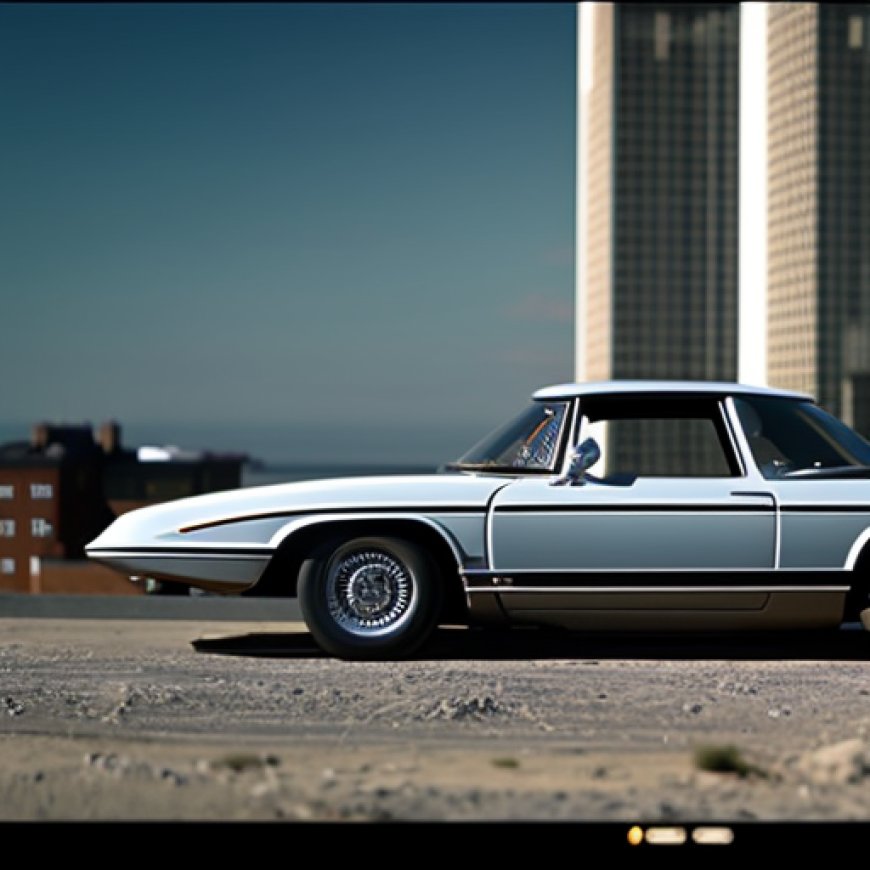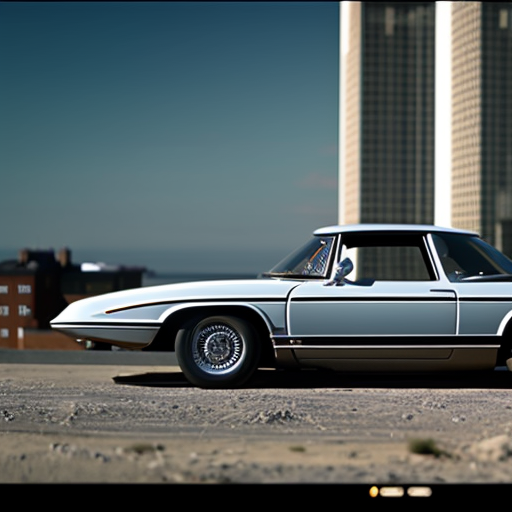What to expect if you’re expecting a plug-in hybrid
What to expect if you’re expecting a plug-in hybrid MIT Technology Review


Electric Vehicles: The Potential and Limitations of Plug-In Hybrids
Introduction
This article is from The Spark, MIT Technology Review’s weekly climate newsletter. To receive it in your inbox every Wednesday, sign up here.
If you’ve ever eaten at a fusion restaurant or seen an episode of Glee, you know a mashup can be a wonderful thing.
Plug-In Hybrids: A Sustainable Solution?
Plug-in hybrid vehicles should be the mashup that the auto industry needs right now. They can run a short distance on a small battery in electric mode or take on longer drives with a secondary fuel, cutting emissions without asking people to commit to a fully electric vehicle.
But all that freedom can come with a bit of a complication: plug-in hybrids are what drivers make them. That can wind up being a bad thing because people tend to use electric mode less than expected, meaning emissions from the vehicles are higher than anticipated, as I covered in my latest story.
So are you a good match for a plug-in hybrid? Here’s what you should know about the vehicles.
Electric Range is Limited, and Conditions Matter
Plug-in hybrids have a very modest battery, and that’s reflected in their range. Models for sale today can generally get somewhere between 25 and 40 miles of electric driving (that’s 40 to 65 kilometers), with a few options getting up to around the 50-mile (80 km) mark.
But winter conditions can cut into that range. Even gas-powered vehicles see fuel economy drop in cold weather, but electric vehicles tend to take a harder hit. Battery-powered vehicles can see a 25% reduction in range in freezing temperatures, or even more depending on how hard the heaters need to work and what sort of driving you’re doing.
In the case of a plug-in hybrid with a small battery, these range cuts can be noticeable even for modest commutes. I spoke with one researcher for a story in 2022 who told me that he uses his plug-in hybrid in electric mode constantly for about nine months out of the year. Charging once overnight gets him to and from his job most of the time, but in the winter, his range shrinks enough to require gas for part of the trip.
It might not be a problem for you lucky folks in California or the south of Spain, but if you’re in a colder climate, you might want to take these range limitations into account. Parking in a warmer place like a garage can help, and you can even preheat your vehicle while it’s plugged in to extend your range.
Charging is a Key Consideration
Realistically, if you don’t have the ability to charge consistently at home, a plug-in hybrid may not be the best choice for you.
EV drivers who don’t live in single-family homes with attached garages can get creative with charging. Some New York City drivers I’ve spoken with rely entirely on public fast chargers, stopping for half an hour or so to juice up their vehicles as needed.
But plug-in hybrids generally aren’t equipped to handle fast charging speeds, so forget about plugging in at a Supercharger. The vehicles are probably best for people who have access to a charger at home, in a parking garage, or at work. Depending on battery capacity, charging a plug-in hybrid can take about eight hours on a level 1 charger, and two to three hours on a level 2 charger.
Most drivers with plug-in hybrids wind up charging them less than what official estimates suggest. That means on average, drivers are producing more emissions than they might expect and probably spending more on fuel, too. For more on setting expectations around plug-in hybrids, read more in my latest story here.
Potential for Better Plug-In Models
For US drivers, state regulations could mean that plug-in offerings could expand soon.
California recently adopted rules that require manufacturers to sell a higher proportion of low-emissions vehicles. Beginning in 2026, automakers will need clean vehicles to represent 35% of sales, ramping up to 100% in 2035. Several other states have hopped on board with the regulations, including New York, Massachusetts, and Washington.
Plug-in hybrids can qualify under the California rules, but only if they have at least 50 miles (80 km) of electric driving range. That means that we could be seeing more long-range plug-in options very soon, says Aaron Isenstadt, a senior researcher at the International Council on Clean Transportation.
Some other governments aren’t supporting plug-in hybrids, or are actively pushing drivers away from the vehicles and toward fully electric options. The European Union will end sales of gas-powered cars in 2035, including all types of hybrids.
Ultimately, plug-in hybrid vehicles can help reduce emissions from road transportation in the near term, especially for drivers who aren’t ready or willing to make the jump to fully electric cars just yet. But eventually, we’ll need to move on from compromises to fully zero-emissions options.
Related Reading
Real-world driving habits can get in the way of the theoretical benefits of plug-in hybrids. For more on why drivers might be the problem, give my latest story a read.
Plug-in hybrids probably aren’t going away anytime soon, as I wrote in December 2022.
Still have questions about hybrids and electric vehicles? I answered a few of them for a recent newsletter. Check it out here.
Another Thing
China has emerged as a dominant force in climate technology, especially in the world of electric vehicles. If you want to dig into how that happened, and what it means for the future of addressing climate change, check out the latest in our Roundtables series here.
For a sampling of what my colleagues got into in this conversation, check out this story from Zeyi Yang about how China came to lead the world in EVs, and this one about how EV giant BYD is getting into shipping.
Keeping up with Climate
The US Department of Energy just awarded $6 billion to 33 projects aimed at decarbonizing industry, from cement and steel to paper and food. (Canary Media)
→ Among the winners: Sublime Systems and Brimstone, two startups working on alternative cement. Read more about climate’s hardest problem in my January feature story. (
SDGs, Targets, and Indicators Analysis
1. Which SDGs are addressed or connected to the issues highlighted in the article?
- SDG 7: Affordable and Clean Energy
- SDG 9: Industry, Innovation, and Infrastructure
- SDG 11: Sustainable Cities and Communities
- SDG 13: Climate Action
The article discusses the issues related to plug-in hybrid vehicles and their impact on emissions, range limitations, charging infrastructure, and government regulations. These issues are connected to the SDGs mentioned above, which aim to promote clean energy, sustainable transportation, and climate action.
2. What specific targets under those SDGs can be identified based on the article’s content?
- SDG 7.2: Increase substantially the share of renewable energy in the global energy mix.
- SDG 9.4: Upgrade infrastructure and retrofit industries to make them sustainable.
- SDG 11.6: Reduce the adverse per capita environmental impact of cities.
- SDG 13.2: Integrate climate change measures into national policies, strategies, and planning.
The article highlights the need to increase the share of renewable energy in the form of plug-in hybrid vehicles, upgrade charging infrastructure, and reduce emissions from road transportation. These targets align with the specific SDGs mentioned above.
3. Are there any indicators mentioned or implied in the article that can be used to measure progress towards the identified targets?
- Percentage of renewable energy sources in the total energy mix
- Number of charging stations for plug-in hybrid vehicles
- Reduction in emissions from road transportation
- Number of regulations and policies promoting clean vehicles
The article mentions the need for more charging infrastructure and government regulations to support plug-in hybrid vehicles. These indicators can be used to measure progress towards the identified targets.
Table: SDGs, Targets, and Indicators
| SDGs | Targets | Indicators |
|---|---|---|
| SDG 7: Affordable and Clean Energy | 7.2: Increase substantially the share of renewable energy in the global energy mix. | Percentage of renewable energy sources in the total energy mix. |
| SDG 9: Industry, Innovation, and Infrastructure | 9.4: Upgrade infrastructure and retrofit industries to make them sustainable. | Number of charging stations for plug-in hybrid vehicles. |
| SDG 11: Sustainable Cities and Communities | 11.6: Reduce the adverse per capita environmental impact of cities. | Reduction in emissions from road transportation. |
| SDG 13: Climate Action | 13.2: Integrate climate change measures into national policies, strategies, and planning. | Number of regulations and policies promoting clean vehicles. |
Behold! This splendid article springs forth from the wellspring of knowledge, shaped by a wondrous proprietary AI technology that delved into a vast ocean of data, illuminating the path towards the Sustainable Development Goals. Remember that all rights are reserved by SDG Investors LLC, empowering us to champion progress together.
Source: technologyreview.com

Join us, as fellow seekers of change, on a transformative journey at https://sdgtalks.ai/welcome, where you can become a member and actively contribute to shaping a brighter future.







